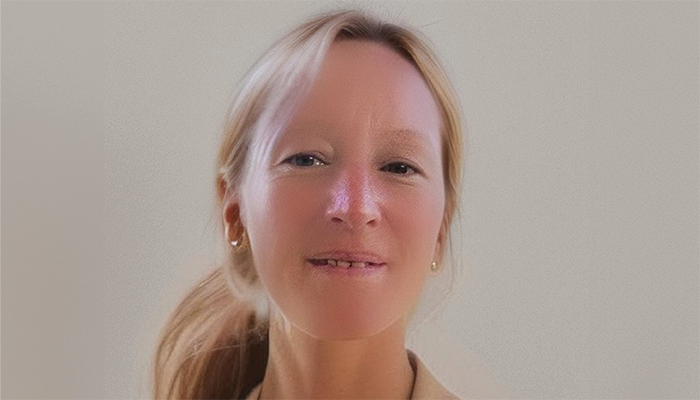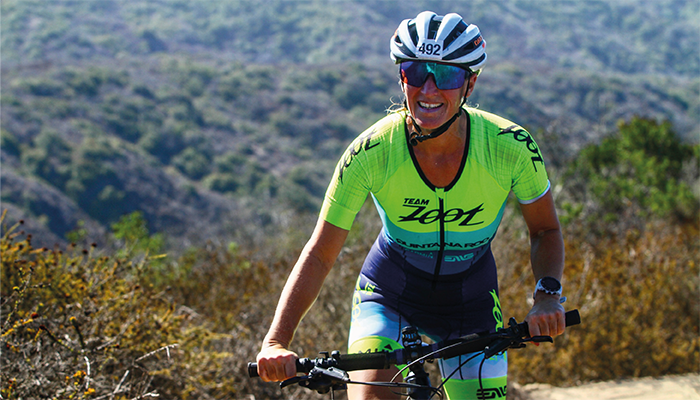
Credit: Supplied by Interviewee
Did you always want to be a scientist?
As a kid growing up in a small village at the Baltic Sea in Northern Germany, I always thought I would one day sail the world. But I discovered that I really had a knack for the natural sciences and medicine, so I studied biology and biochemistry in Kiel, Germany. After obtaining my PhD in cell biology at ETH Zurich, Switzerland, I moved to the world-renowned John Yates laboratory at Scripps Research in California to follow my passion of developing novel proteomics methods that will lead to better diagnosis and treatment of devastating protein misfolding diseases, such as cystic fibrosis, amyloidosis, Alzheimer’s, and other neurodegenerative disorders.
Why is protein misfolding so important?
Protein misfolding occurs in and causes many diseases, including all the major neurodegenerative diseases such as Alzheimer’s and Parkinson, but is very difficult to detect in patients due to a lack of proper molecular tools. Therefore, many misfolding diseases are vastly underdiagnosed and are typically recognized too late for effective therapeutic intervention. For example, Amyloidosis and especially transthyretin amyloid cardiomyopathy (ATTR-CM) is a largely underdiagnosed, fatal misfolding disease that may affect up to 25 percent of men over the age of 75 and is caused by deposition of misfolded, aggregated transthyretin (TTR) protein in the heart and peripheral nerves. Even though effective therapies, such as tafamidis discovered at Scripps Research by Jeffrey Kelly’s laboratory, are now available, there is a lack of molecular diagnostic tools able to detect the disease. And that means ATTR-CM is often confused with other common cardiovascular conditions and diagnosis typically occurs only when patients have already experienced and survived heart failure.
What led you to form 3D BioAnalytiX?
My work – and especially my discovery of a disease-specific protein interactome in cystic fibrosis, which was published in Nature in 2015 – inspired my team and I to understand what a misfolded protein – which presumably leads to disease specific interactions – really looks like in vivo. However, this wasn’t possible with the molecular tools available at the time. We couldn’t identify, let alone quantify, misfolded, aggregated proteins in patients.
And that’s why I co-developed covalent protein painting (CPP) – a method that combines small, cell permeable, covalent labels with mass spectrometry – which allows us to identify and characterize misfolded proteins in vivo. In fact, it’s not just misfolded proteins – we can characterize any protein conformational change across the whole proteome in an unbiased and, most importantly, quantitative manner.
To make use of these new techniques for drug development and diagnosis of misfolding diseases, I founded 3D BioAnalytiX in July 2023. Since then, I have further developed the method into a scalable and automatable platform, which has opened up a huge range of applications looking at conformational or structural change in the proteome. In addition, we developed a reagent kit to make the platform more accessible to others for drug development, which is now being used by the first, select customers. To be sure, developing and running a business has been a wild and challenging – but highly rewarding – ride. And I am looking very positively into the future – especially now that we have the first positive patient study results for a diagnostic blood test for amyloidosis.

Credit: Supplied by Interviewee
Tell us more about the diagnostic test for amyloidosis…
While developing a blood test for neurodegeneration, we realized that we were able to detect and characterize the fold of TTR reliably in patient plasma and had a tool that could potentially address the underdiagnosis crisis in amyloidosis.
Together with Jeff Kelly and Mathew Maurer from the Amyloidosis Center at Columbia University, I ran a discovery study that showed that we can identify and distinguish ATTR patients from control patients from just 50 µl of plasma using our proteomics platform technology. We are now validating these results with many more patients and believe that we will have a blood-based diagnostic test soon that can for the first time directly identify and quantify the characteristic misfolded TTR aggregates in small amounts of plasma. Because of the scalability of the platform, it holds promise to become widely available and could help millions of patients – there are approximately 5.5 million patients in Europe and the US alone. We are extremely excited about the test and the results have been enthusiastically embraced by the amyloidosis community.
What’s next for you and 3D BioAnalytix?
Personally, this journey is a huge adventure and, of course, it will be a huge risk to eventually focus and completely rely on the business. As a triathlete, who qualified for and attended world championships, I have never shied away from a good challenge though and, of course, we do have defined exit strategies. The next two milestones will be to i) grow the reagent kit business and include more selected customers, so that sales can support at least part of the business, and ii) and further develop our diagnostic blood tests. We were now awarded funding to do exactly that and are becoming part of the JLABS family, and I am very excited about that. The next bridge to cross will be securing further financing to grow 3D BioAnalytiX, and to hire the necessary scientists and bioinformaticians. We are working hard on that and I am grateful to all of those who believe in me – and especially my two little kids, who are firm believers that their mom will “slay” this!
Hold on, you’re an elite triathlete!?
Yes, I am! I qualified for and participated in two world championships for cross-triathlon in 2022 and 2023 (XTERRA world championships in Italy) and didn’t do too badly either (15th place in my age group). I was a huge sports nut as a kid, competed in gymnastics and won many swim and track competitions. My mom still keeps a folder with all those award certificates. I later learned to snowboard, surf, windsurf and sail, but with studies and my PhD I had less and less time and focused fully on those. It was not until late 2018 when a friend asked what the heck happened to me that I abandoned competitive sports! I soon found a triathlon to compete in and started training for it.
I distinctly remember and laugh about my first competition after that in December 2018 – a 100 x 100 m swim competition with each 100 m under 2:12 min/100 m. I swam for 3.5 hours and was still nauseous the next morning, but can proudly say I made it. My first triathlon in early 2019 in freezing waters (!) was then a third place finish; I was hooked and haven’t looked back. In 2021, I did my first half ironman – the Oceanside 70.3 – and placed fifth and also found my love for cross triathlon – swimming in the ocean, running on trails uphill, and mountain biking. I am also part of the Canyon Elite Cycling team Coureur for gravel biking and may have won a few races as well. If I have learned anything from all that, it is that you can push your limits so much further than you ever thought possible when you love what you do. But it is essential to keep your cool and persevere when the going gets tough. Of course, starting a new company can seem just like a triathlon at times…
You manage to balance sports training, family, research, and business... Any tips or words of advice?
My colleagues will probably laughingly confirm that I can often be found in the lab in my running shorts or cycling shoes, out of breath, but with a huge smile on my face – or leaving the office in them. Sport is as essential to me as sleep and is my way to decompress and manage stress and find joy even on the busiest days – there’s also lots of research that shows the many physical and mental benefits of sports. I would encourage anyone to really leave that inner couch potato behind and get out. Sometimes you have to get creative, but I believe you can: cycle to work, use your lunch break, take an extra half hour before going home, or get up an extra half hour early. I will also often hike, mountain bike, or run with my kids; they are very active as well and love sailing and snowboarding on vacations. Oftentimes an email can wait until the next day and, of course, phones have made it so much easier to work and communicate on the go (or a trail!). You’ll also make friends – training and suffering together through hours of cycling or running up a mountain will forge some of the best friendships ever!




